5 Fast-Growing Intercrops To Max Out Your Vegetable Garden
Even the smallest gardens can have mighty growing potential. These delicious intercrops are quick and easy to grow and will make your veg plot more productive.
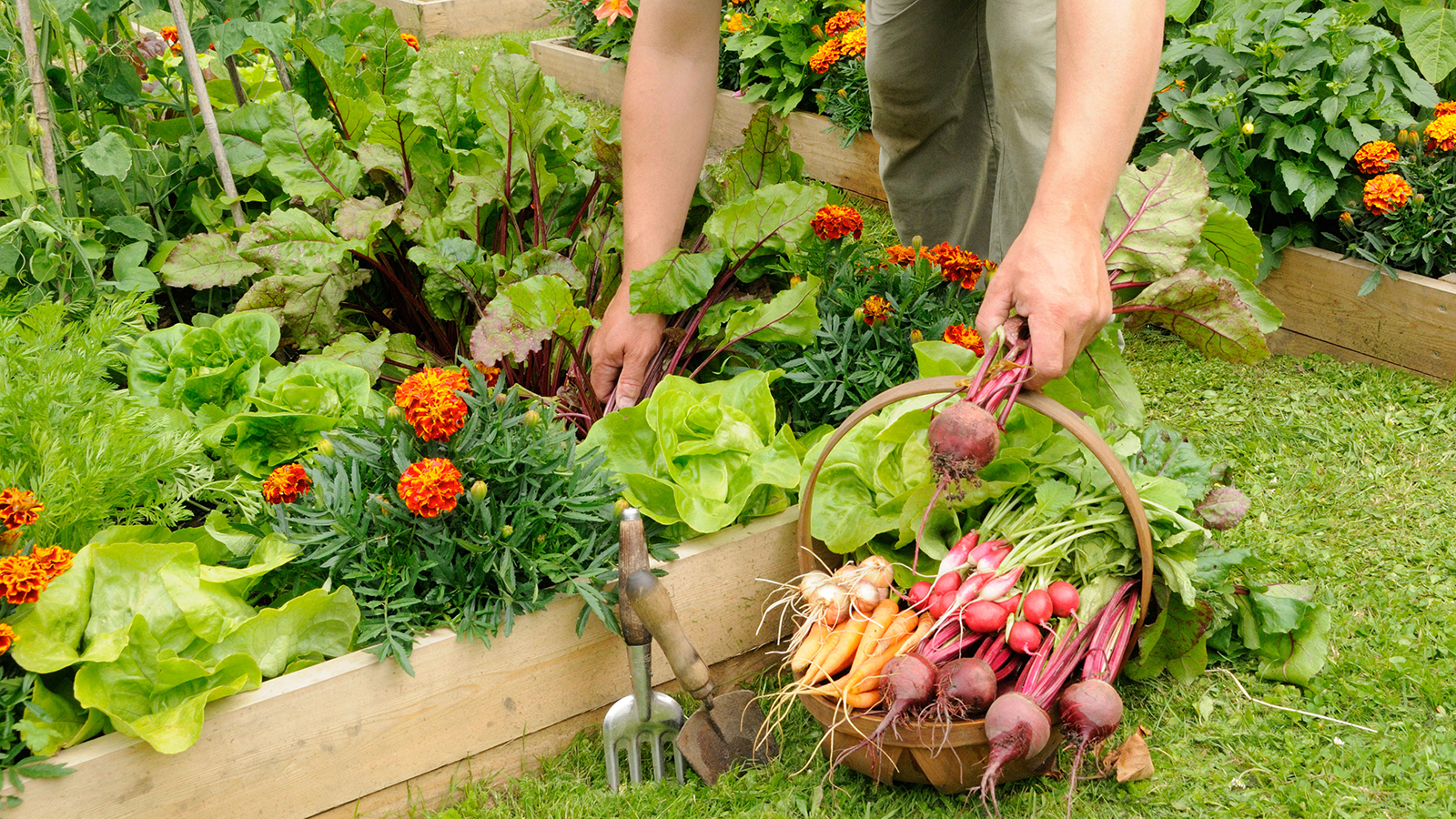

Melanie Griffiths
Vegetable intercropping is an age-old agricultural practice where two or more crops are grown simultaneously in the same field, with smaller crops planted in the space between rows of the main crop. However, the idea can be easily translated to the home garden, enabling growers to maximize the available space and increase yields.
Small, fast-growing vegetables can be grown in spaces in flowerbeds, or between larger, later-maturing crops. Ready in as little as a few weeks, these intercrops will be harvested well before the main crops need the space to spread out.
As well as increasing productivity, the practice has other benefits. Intercrops can act as cover crops, improving water retention, providing shade, or reducing wind erosion. Crops can even balance out soil nutrients, such as legumes fixing nitrogen.
However, when choosing companion plants, you must always ensure they are compatible and will not compete for nutrients, water, and space.
To get the best out of even the tiniest of spaces, try combining intercropping with other solutions, such as succession planting and vertical vegetable growing.
These fast-growing intercrops are easy and trouble-free to grow, and will make your vegetable plot work harder with minimal effort.
1. Radishes
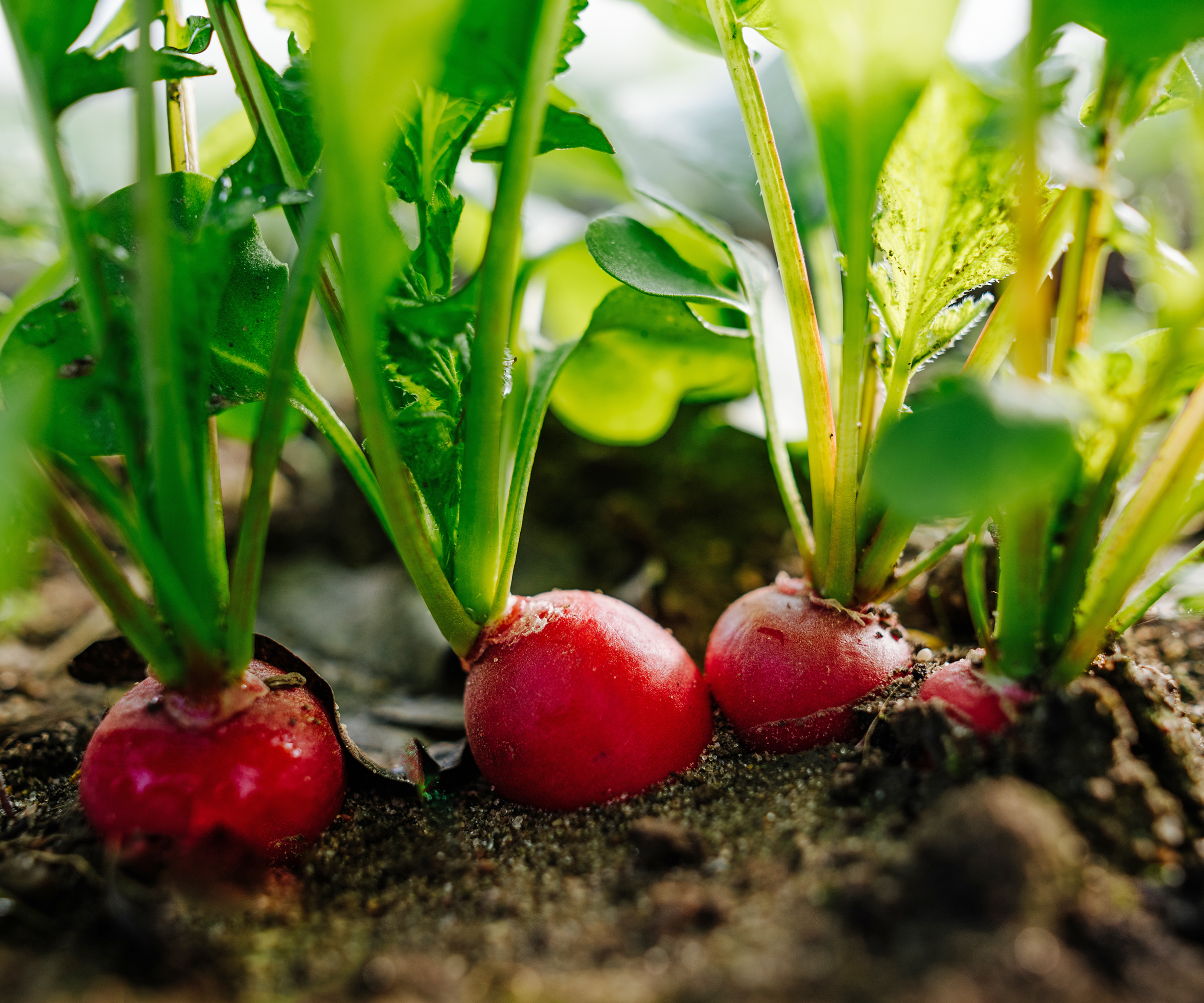
The underrated radish is one of the fastest-growing crops, maturing in about 3-4 weeks from sowing. A cool-season veggie, it can be started both in the spring and fall for a double crop.
Gardening tips, videos, info and more delivered right to your inbox!
Sign up for the Gardening Know How newsletter today and receive a free copy of our e-book "How to Grow Delicious Tomatoes".
Belonging to the brassica family, which also includes cauliflower, broccoli, and Brussels sprouts, radishes are terrific intercropping options with these cousins. The radishes will be ready to harvest right around the time the larger brassicas need extra space in the garden.
They also work well as an intercrop with slower root veggies like parsnips, carrots, or even between potato plantings.
Growing radishes is easy. In the spring seeds can be directly sown as early as four weeks before the last frost in your area.
Sow seeds in loose, well-draining, fertile soil in full to partial sun. Plant to a depth of ½ inch (13mm) and spaced ½ inch apart. Thin the seedlings when they have their first set of true leaves to 1 inch (2.5cm) apart.
2. Baby Bok Choy
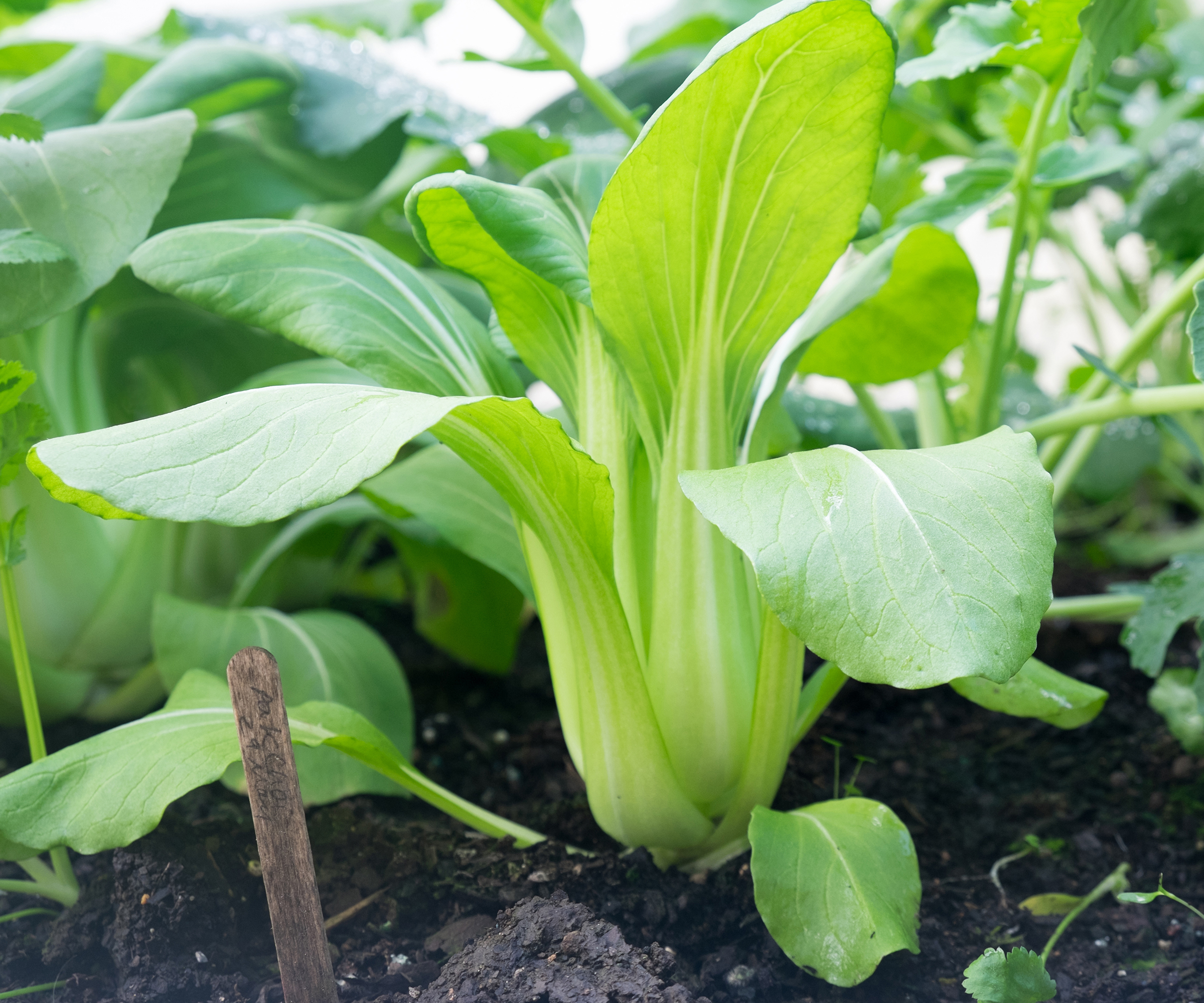
For something a little more exotic, try growing baby bok choy – or pak choi – as an intercrop. A common ingredient in many Asian dishes, bok choy is another cool-season brassica that can be harvested at almost any stage, but the tender young leaves are the most succulent.
Bok choy does well in full sun but also thrives in partial sun. This makes it a good intercropping option for full-sun crops with large leaves, since the resulting shade won’t affect bok choy’s growth.
Bok choy is a heavy feeder so amend the soil with plenty of compost before sowing. Sow seeds in the spring after all danger of frost has passed. Sow seeds ½ inch (13mm) deep, 3 inches (8cm) apart in rows 18 inches (46cm) apart.
Thin the seedlings to 6-9 inches (15-23cm) apart when they are 4 inches (10cm) in height. Just use a pair of scissors to snip out the thinned shoots, and add them to salads or stir-fries.
3. Spring Onions & Scallions
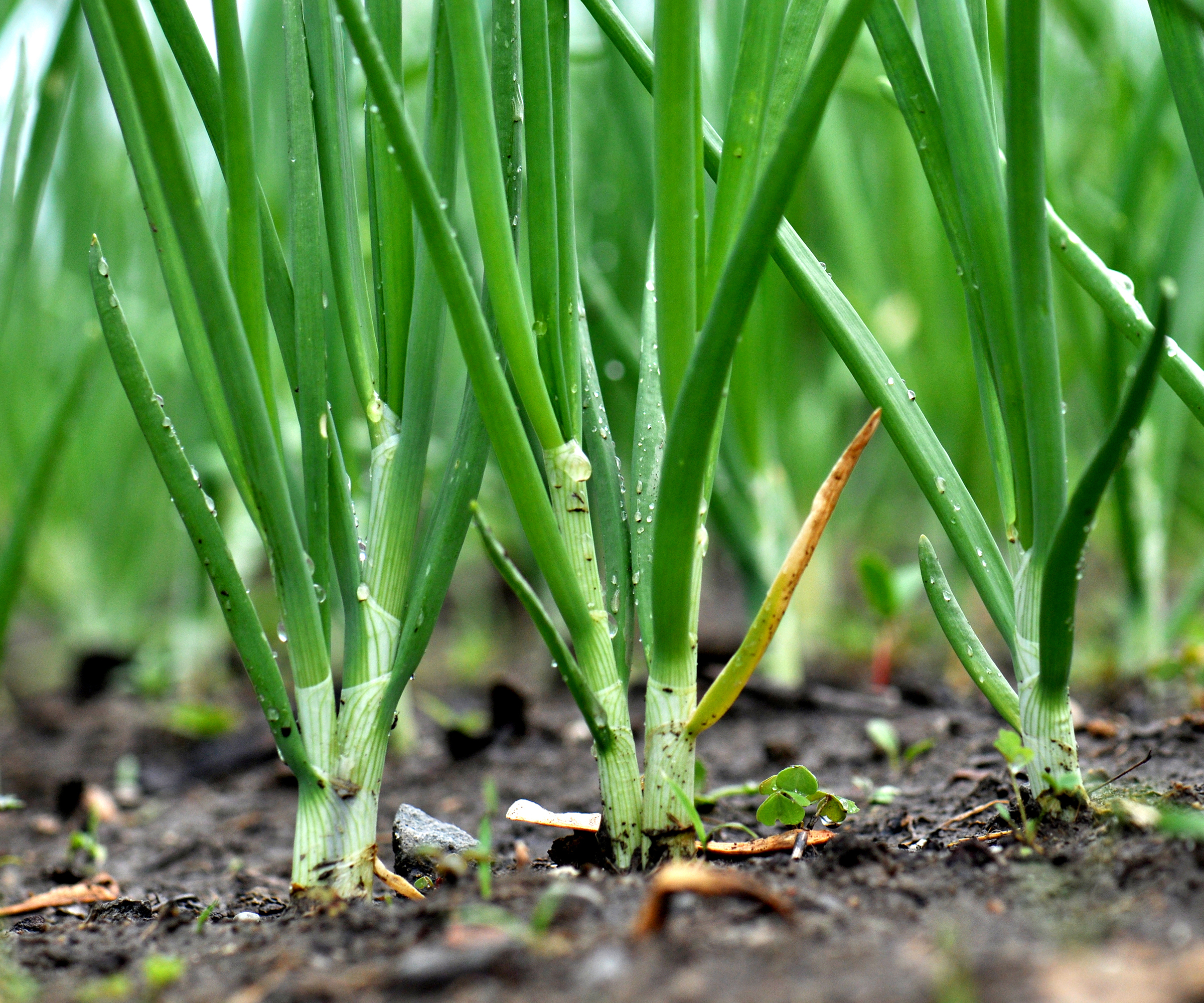
While spring onions and scallions are often used interchangeably, they are different and yet similar. Both are alliums, both grow quickly in the early spring, and both have that oniony flavor and aroma.
While spring onions are bulbing onions, scallions are grown more for their delicious green tops. That said, the white and green parts of both alliums can be eaten. Both work well as intercrops due to their rapid maturity, shallow root systems, and small footprint.
Soil for spring onions should be well-draining, rich in compost or other organic material, and slightly acidic to neutral.
Plant sets – small dry onion bulbs – 6-8 weeks prior to the last frost. Space 4-6 inches (10-15cm) apart and 2 inches (5cm) deep.
If planting spring onions from seeds, sow the seed as soon as the ground can be worked in the spring. Sow seeds 4 inches (10cm) apart and gently press them into the soil.
Plants started from seeds will be ready to harvest in 40-50 days and those planted from sets will be ready sooner.
Green onions or scallions can be started inside or sown directly into the garden. Sow seeds ¼ inch (6mm) apart and ¼ inch deep in fertile, well-draining soil in the spring as soon as the ground can be worked.
They will be ready to harvest in about 50 days and can be dug up entirely or harvested as cut-and-come-again crops by cutting off just a little of the green.
4. Baby Beets
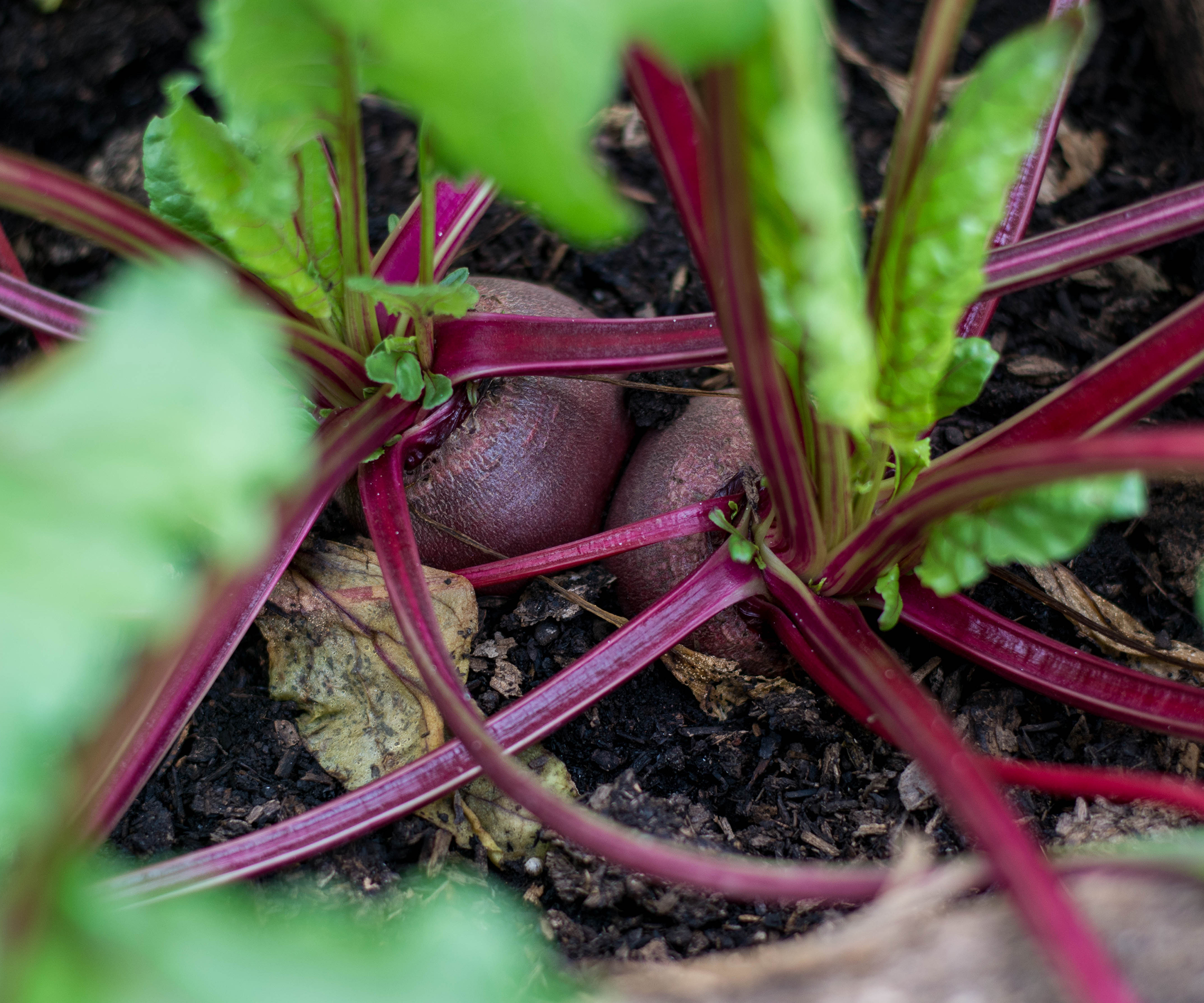
Beet is another excellent, rapid-growing intercrop that can be left to harvest until fully mature or harvested as baby beetroot at about 7 weeks from planting. Intercrop beets with brassicas such as cabbage, kale, and broccoli.
Another cool-season crop, beet can be planted in the spring as soon as the soil can be worked. There are many different beet varieties with various colors available, even some bolt-resistant varieties, which won’t be necessary if harvested at the baby beet stage.
Beets tolerate low-fertility soils but thrive when the soil is amended with plenty of organic matter and is well-draining. Plant seeds directly into the garden, ½ inch (13mm) deep and 1-2 inches (2.5-5cm) apart. When the plants are 4-5 inches (10-13cm) tall, thin the beets to 3-4 inches apart (8-10cm).
When harvesting beets, do not tug on the plants to remove them from the soil. Instead, cut them off as close to soil level as possible to avoid disturbing the root.
Keep the soil consistently moist as the beets grow so the roots don't crack.
5. Leafy Greens
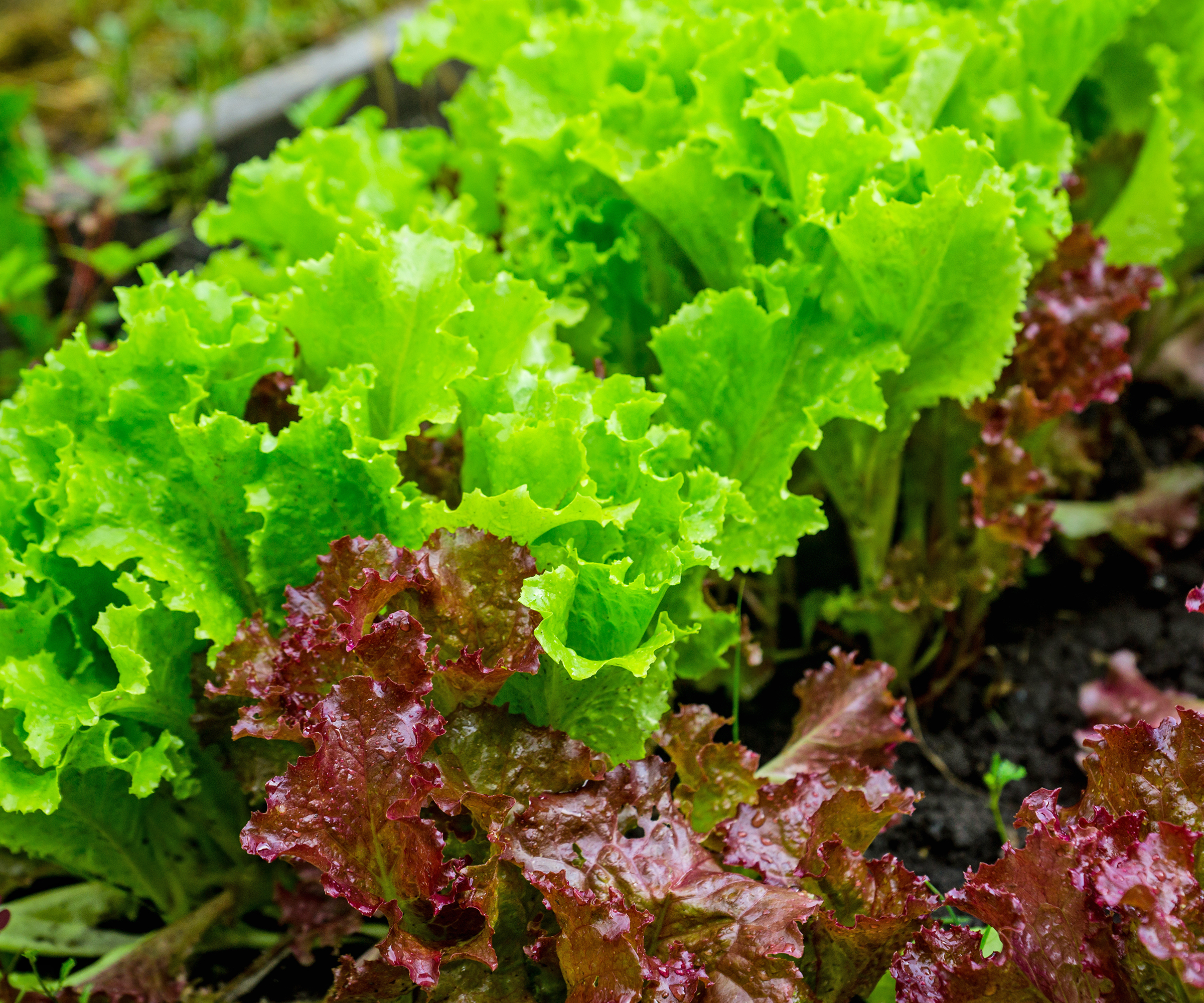
Leafy greens, such as lettuce, arugula, and spinach, are quick to mature and make excellent intercropping options for climbers like peas. The leaves shade the roots of the plants but don’t compete for nutrients.
In this scenario, harvest the greens by cutting them rather than digging the entire lettuce or spinach plant out to avoid disturbing the pea roots. Harvesting only a select few leaves will allow the lettuce to continue to grow and produce new leaves.
The beauty of intercropping with leafy greens is that you can plant a variety. Sow leafy greens as soon as temperatures have warmed and all danger of frost has passed, or start them inside to get a jump start on the harvest.
Plant them in an area with full morning sun followed by some dappled shade, in soil that is well-draining and fertile.
Spacing depends on the variety you're growing, so consult the seed packet for further information. If you prefer your greens harvested young and tender, they can be planted closer together.
After the lettuce crops have died back and the peas are about finished producing, you have another opportunity to maximize the growing season. Terminate the pea vines by cutting them from the soil, and replace the growing bed with squash or cucumbers, allowing them to clamber up the trellis previously used by the peas. Intercrop with carrots or parsnips.

Amy Grant has been gardening for 30 years and writing for 15. A professional chef and caterer, Amy's area of expertise is culinary gardening.
- Melanie GriffithsSenior Editor
-
 8 Perfect Flowers To Plant With Tomatoes To Boost Yields & Banish Pests
8 Perfect Flowers To Plant With Tomatoes To Boost Yields & Banish PestsDon’t forget flowers when choosing companion plants for your tomato beds or pots. These pretty, fragrant blooms add beauty but are also highly beneficial.
By Mary Ellen Ellis
-
 Want The Longest Lasting Hydrangea Flowers? Grow These 8 Panicle Hydrangea Varieties
Want The Longest Lasting Hydrangea Flowers? Grow These 8 Panicle Hydrangea VarietiesFor ornamental shrubs that deliver the longest flowering seasons with plush blooms and delicate hues, these panicle hydrangea varieties are essential in your yard
By Tonya Barnett